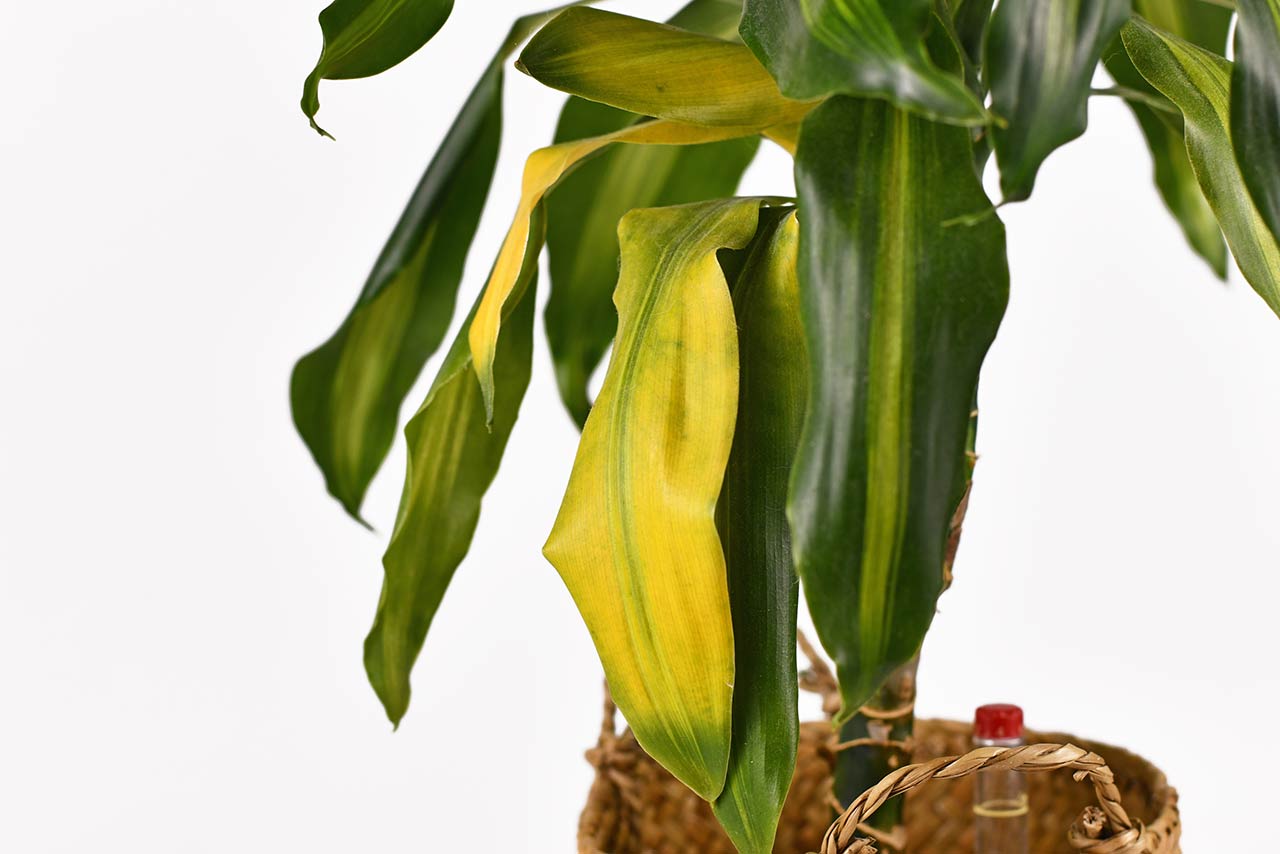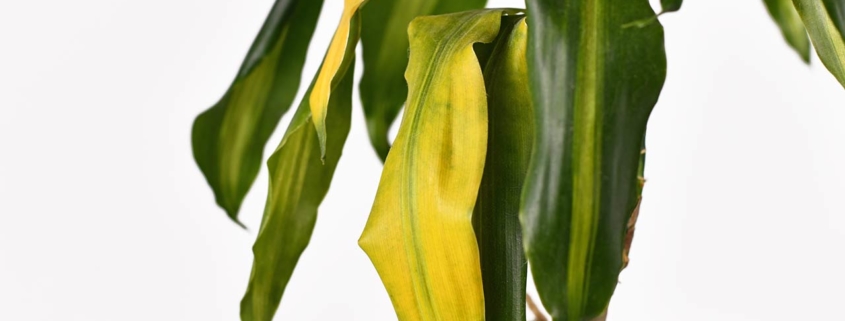Chicago Home and Lifestyles – Yellowing houseplant leaves: causes and treatment

Yellowing leaves are one of the most common problems with houseplants. It is known as ‘chlorosis’ and occurs when something is interfering with the plant’s chlorophyll. Chlorophyll is the pigment that gives leaves their green color. Plants use chlorophyll, combined with sunlight, to convert water and carbon dioxide into oxygen and glucose that it uses for food.
Here are a couple of reasons this could be happening, and the remedy for each.
Yellowing leaves can usually be solved by proper watering. Under and over watering can both cause problems. Over watering is the most common. It will be indicated by yellow leaves that are floppy and pliable. Stick your finger in the dirt past your second knuckle. Do not water if moisture is felt. The surface soil dries out quickly and often fools you into thinking you need to water. Underwatered yellow leaves will feel dry and crispy. Water well, but don’t go overboard! Water until all the soil is just moist.
Plants that are pot bound will yellow all over the plant, not just a few leaves. All healthy plants will eventually outgrow their pots so if your plant is yellow all-around, ease it out of the pot. If the roots look tight and are circling around, it is time to repot. It is best not to jump up more than the next pot size when choosing a new pot. Say from a 4-inch pot to a 6-inch pot. If a plant is severely root bound, where the entire pot is rooted, you can move up 2 sizes. From a 4-8 for example. Water the plant to be repotted first. Place an inch of soil in the bottom of the new pot, place the plant in and fill with potting soil. Water lightly. Plants will take a little time to adjust to the new pot. It may drop a few leaves, but this is normal.
Sometimes even the healthiest plants will have yellow leaves that will drop. This is a perfectly normal cycle for plants. Older leaves will die off. They will turn yellow and drop. This helps the plant put energy into new growth. Trim off yellowing leaves as you see them. As long as you see new growth it is healthy.
Kathleen Weaver-Zech and Dean’s Team Chicago

